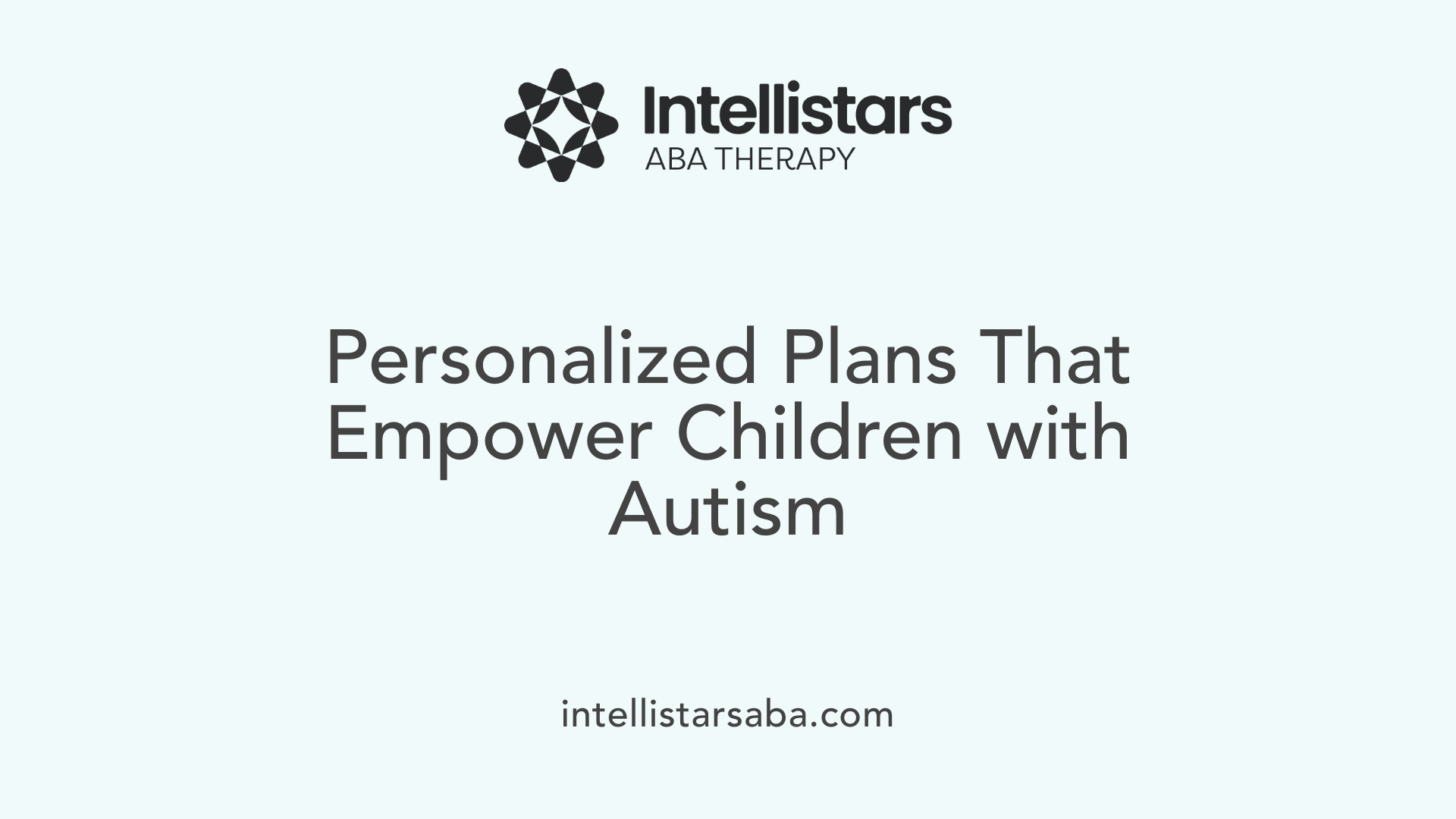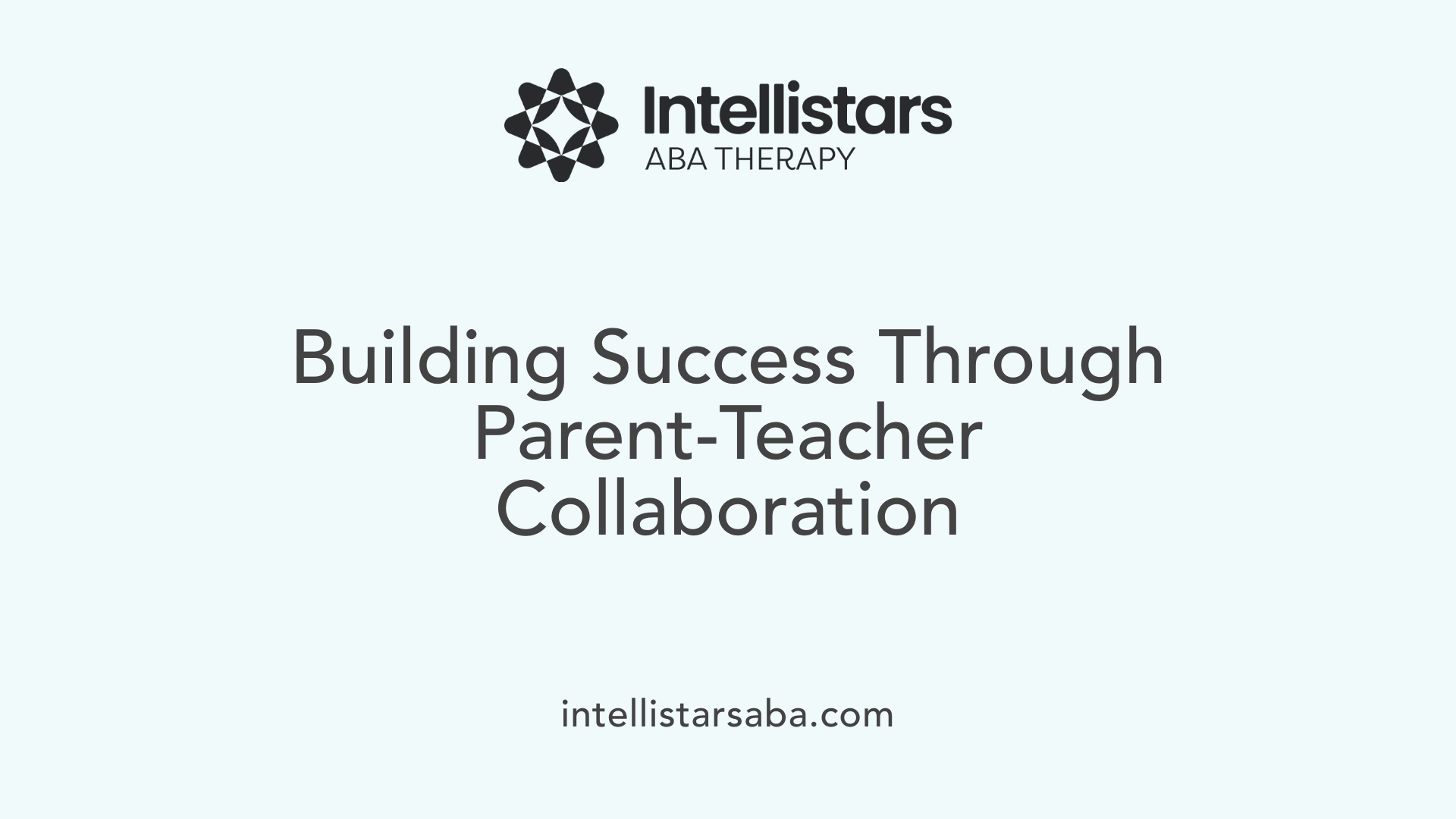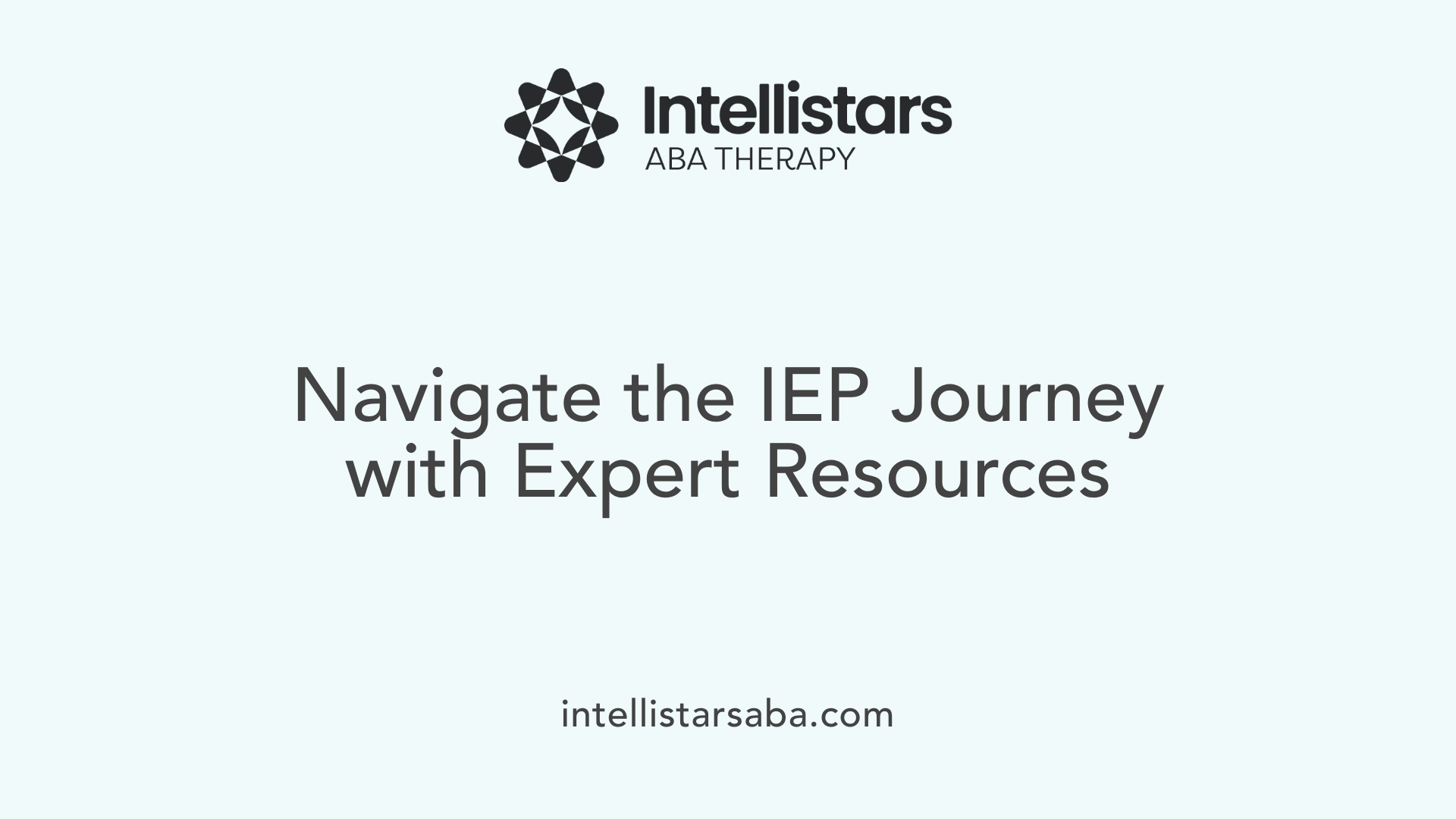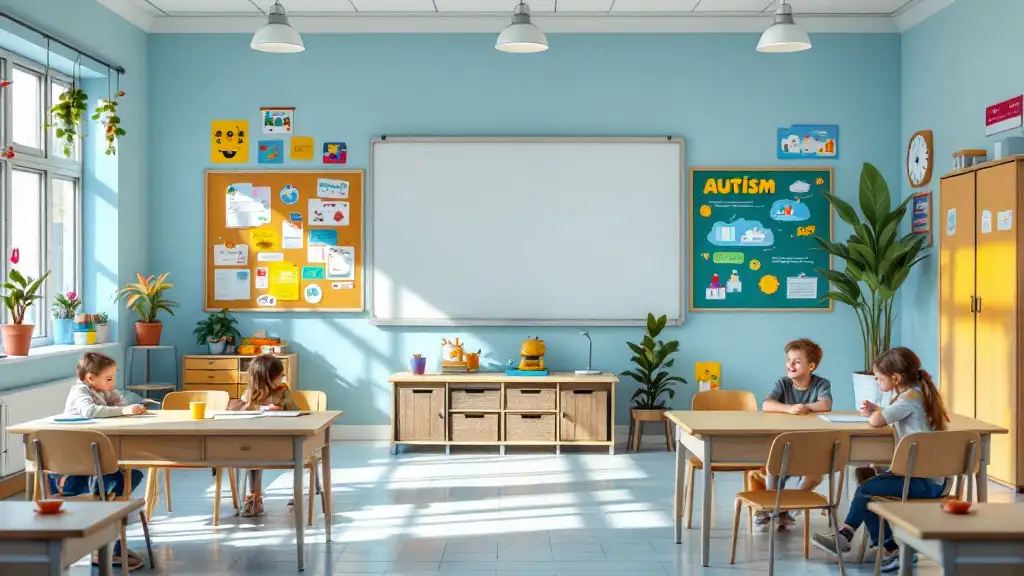A Comprehensive Guide for Parents and Educators
Individualized Education Programs (IEPs) are essential tools that help tailor educational experiences to meet the unique needs of children with autism. This article explores what IEPs are, their purpose and components, and how parents, educators, and specialists can collaborate effectively to ensure these plans support each child's growth and success in school.
What Are IEPs for Children with Autism?
What are Individualized Education Programs (IEPs) for children with autism?
Individualized Education Programs (IEPs) are personalized plans designed to meet the unique educational needs of children with autism. These plans are created through a collaborative process that includes parents, teachers, specialists, and school administrators. The IEP clearly outlines specific goals, accommodations, and services tailored to support the child's development and learning.
For children with autism, IEPs address several critical areas such as social skills, communication ability, behavioral management, academic progress, and daily living skills. To support these areas, the plan often includes evidence-based interventions like speech therapy, occupational therapy, behavioral support, and social skills training.
The IEP is a legally binding document mandated by the Individuals with Disabilities Education Act (IDEA), which guarantees that the child receives the necessary resources and support services within the school setting. It is not a static plan; instead, it is reviewed and updated regularly, usually once a year, to reflect the child’s progress and any changing needs. This ongoing process ensures that the educational approach remains responsive and effective, giving children with autism the best chance to develop essential skills and succeed academically.
Main Purposes and Components of IEPs for Autism

What are the main purposes and key components of IEPs for children with autism?
An Individualized Education Program (IEP) is essential for ensuring children with autism receive education that meets their individual needs. Its primary purpose is to tailor educational plans so that every child gains access to a Free Appropriate Public Education (FAPE) as mandated by the Individuals with Disabilities Education Act (IDEA).
The IEP serves as a personalized and legally binding roadmap that brings together parents, teachers, and school specialists to create a comprehensive support plan. This plan details specific, measurable goals focused on areas such as communication, social skills, behavior management, and academics. By clearly outlining necessary services, accommodations, and supports, the IEP helps facilitate meaningful progress for the student.
Key components of an IEP include:
| Component | Details | Additional Notes |
|---|---|---|
| Present Levels of Performance | Describes the child's current academic, communication, social, and behavioral skills based on assessments. | Foundation for setting realistic goals. |
| Measurable Goals | Outlines specific, achievable objectives in areas like literacy, social interaction, and daily living skills. | Goals should be observable and tied to state standards. |
| Related Services | Includes therapies such as speech, occupational therapy, or behavioral support needed to meet the child's goals. | Often coordinated with assistive technology. |
| Classroom Placement | Determines the environment that best supports the child's learning needs, such as general classroom, resource room, or specialized setting. | Emphasizes least restrictive environment. |
| Transition Planning | For older students, plans for postsecondary education, employment, or independent living are included. | Focuses on preparing for adulthood. |
| Progress Monitoring | Describes how and when the child's progress will be assessed and reported. | Ensures accountability and necessary adjustments. |
Overall, the IEP is not just a document but a continuous process that involves regular reviews and updates. It guarantees that students with autism receive tailored support that adapts to their evolving needs, promoting their maximum development and inclusion in the educational environment.
Developing an IEP: The Process and Key Participants
How is an IEP developed and who is involved in the process?
Creating an Individualized Education Program (IEP) is a careful, step-by-step process guided by legal requirements that focus on supporting a child's unique needs. The process begins with a referral, which can be initiated by school staff or parents who notice that the child requires additional support.
Once a referral is made, the school conducts a comprehensive evaluation within 60 days, with parents providing written consent. This assessment covers multiple areas such as communication, behavior, social skills, and academic performance to determine if the student qualifies for special education services under laws like IDEA.
If the evaluation confirms eligibility, an IEP team is convened. This team typically includes parents, general education teachers, special education teachers, school administrators, and specialists such as speech-language pathologists, psychologists, occupational therapists, and behavior analysts. Sometimes, the student is involved if appropriate.
During the team meetings, members collaborate to develop a tailored plan that includes measurable goals, necessary services, accommodations, and strategies for progress monitoring. The IEP should clearly specify what support services the child will receive and how their progress will be tracked.
The team meets at least once each year to review the IEP's effectiveness, make necessary revisions, and ensure the plan continues to meet the child's evolving needs. The development and implementation of the IEP follow strict timelines and legal procedures to ensure the child's rights are protected and that they receive the appropriate support as soon as possible.
This structured approach ensures that every child's education plan is customized, legally sound, and focused on fostering educational growth and success.
How IEPs Support Children with Autism in Education

How do IEPs support children with autism in their education?
An Individualized Education Program (IEP) is designed to provide tailored educational support for children with autism. It is a personalized, legally binding document that highlights a child's unique strengths and challenges, ensuring they receive the appropriate services and accommodations to succeed academically and socially.
At the core of an IEP are specific, measurable goals that address academic skills, communication, behavior management, and social interaction. For children with autism, this means planning for targeted interventions like speech therapy, occupational therapy, or behavioral support to foster their development.
The process involves a team of parents, teachers, school specialists, and sometimes the child. This team collaborates to assess needs, develop goals, and outline support strategies. Regular reviews and updates are scheduled to reassess progress and adjust the plan as needed.
How do IEPs address social and behavioral needs?
Children with autism often face challenges in social interactions and managing behaviors. The IEP explicitly includes goals and strategies to improve these skills. For example, behavioral objectives might teach alternative communication methods or routines to reduce frustration.
Support services such as social skills groups, behavioral therapy, and positive reinforcement strategies are documented within the IEP. This targeted approach helps children develop better peer relationships and manage challenging behaviors in the school environment.
How do IEPs promote inclusion and progress?
An essential purpose of the IEP is to facilitate inclusion, ensuring that children with autism participate in the Least Restrictive Environment (LRE). This means children learn alongside their peers without disabilities as much as possible.
The IEP specifies accommodations and supports that allow children to stay in general education classrooms when appropriate. These can include extra time on tests, preferred seating, or assistive technology.
Progress towards goals is monitored regularly through assessments and teacher reports. This focus on outcomes encourages continuous improvement and supports children’s ongoing development.
How often are IEPs reviewed and adapted?
IEPs are typically reviewed at least once a year to evaluate progress and set new goals. However, they can be revisited more frequently if a child's needs change or if progress is not as expected.
Through ongoing monitoring and communication among team members, the IEP ensures that the support remains relevant and effective. Adjustments may include adding new services, modifying goals, or changing accommodations to better suit the learner.
| Aspect | Description | Additional Notes |
|---|---|---|
| Personalization | Tailored goals and support | Based on assessments and ongoing observation |
| Social and Behavioral | Focused supports | Includes social skills training and behavioral strategies |
| Inclusion | Participation in regular classrooms | Using accommodations and technology |
| Review Frequency | Annually or as needed | To adapt to changing needs |
Overall, IEPs serve as comprehensive plans that help children with autism reach their full potential by emphasizing personalized, inclusive, and adaptable support mechanisms in their education.
Collaborative IEP Planning and Implementation

How can parents and educators collaborate on IEP planning and implementation?
Effective collaboration between parents and educators is essential to developing and implementing an IEP that truly supports a child's unique needs. Open communication forms the foundation of this partnership. Regularly scheduled meetings, emails, and shared digital tools allow both sides to stay informed and engaged.
During the IEP process, involving parents early and providing draft plans in advance can help gather valuable insights. This proactive approach makes parents feel valued and motivates them to participate actively in goal setting and decision-making.
Creating a respectful and inclusive atmosphere during meetings encourages open dialogue. It is important that parents are comfortable voicing their concerns and opinions. This collaboration ensures that the child's strengths, needs, and preferences are reflected in the final plan.
Post-meeting communication is equally vital. Follow-up conversations and updates help maintain momentum and adapt the plan as needed. By working together consistently and respectfully, parents and educators foster a trusting environment that promotes the child's success.
Supporting parents through educational resources and guidance about the IEP process empowers them to participate meaningfully. When both parties share responsibility and communicate effectively, the IEP can become a dynamic roadmap that adapts to the child's growth.
Effective communication strategies
- Use multiple channels for ongoing communication.
- Share progress and concerns regularly.
- Provide clear, jargon-free explanations.
- Use visual aids or digital tools for collaboration.
Parental involvement
- Engage parents early in the process.
- Listen carefully to parent insights about their child's needs.
- Respect and incorporate family concerns.
Teamwork and shared decision-making
- Encourage equal participation from all team members.
- Respect diverse perspectives, including those of the student when appropriate.
- Make decisions collaboratively, guided by data and the child's best interests.
Overcoming challenges
- Address resource limitations by prioritizing goals.
- Resolve disagreements through mediation or dispute resolution processes.
- Keep the focus on the child's development and well-being.
| Aspect | Strategies | Benefits |
|---|---|---|
| Communication | Regular meetings, digital updates, visual aids | Builds trust; ensures clarity |
| Parental Engagement | Early involvement, draft reviews, active listening | Enhances plan relevance; parental buy-in |
| Teamwork | Collaborative goal-setting, respect for diverse opinions | Leads to comprehensive, personalized support |
| Overcoming Challenges | Mediation, resource allocation, flexibility in goals | Maintains progress; adapts to changing needs |
This collaborative, transparent approach ensures that the IEP is not just a document but a practical plan rooted in shared understanding and dedicated teamwork, ultimately fostering a supportive environment for children with autism.
Utilizing Resources and Support Systems for Navigating the IEP Process

What resources are available to help understand and navigate the IEP process for children with autism?
Navigating the IEP journey for a child with autism can seem overwhelming, but several valuable resources are available to guide parents and caregivers. Comprehensive online guides and toolkits offer step-by-step instructions on how to advocate effectively for your child's needs. These resources typically include explanations of the IEP process, tips for preparing for meetings, and detailed information about legal rights under laws such as IDEA.
Video series featuring experts like lawyers, school psychologists, and speech pathologists are especially helpful. They answer frequently asked questions, clarify common concerns, and provide practical advice on developing and managing an IEP. These video resources make complex information more accessible and easier to understand.
In addition to digital content, local support organizations and school district offices serve as personalized sources of help. Parent support groups and parent training centers often host workshops and offer one-on-one assistance, guiding families through assessments, forming the team, and writing goals.
Legal advocacy groups and special education advocates are also valuable. They help families understand their rights, review IEP documents, and assist in disputes or disagreements. For example, the Autism Response Team (ART) provides specific support and resources tailored to children with autism.
Checklists and informational brochures can provide quick reference points to ensure all required components are covered in the IEP, such as present levels of performance, measurable goals, and appropriate accommodations.
How can families actively participate in their child's IEP planning?
Empowered by these resources, parents can actively collaborate with educators during IEP meetings. Preparing by reviewing evaluation reports, understanding legal rights, and consulting with professionals enhances their engagement.
Being informed about the available tools and knowing where to seek help ensures families can advocate confidently, securing an educational program that supports their child's unique strengths and challenges. These support systems collectively make the process more transparent, manageable, and ultimately successful in helping children succeed academically and socially.
Legal Rights and Safeguards in the IEP Process

What are parents' legal rights and procedural safeguards in the IEP process?
Parents play a crucial role in developing and reviewing their child's Individualized Education Program (IEP). Under laws like the Individuals with Disabilities Education Act (IDEA), they are granted specific legal rights and safeguards to ensure meaningful participation and protect their child's educational interests.
One fundamental right is the opportunity to participate in all meetings that concern their child's education. This includes being involved in assessments, IEP development, reviews, and revisions. Parents have the right to review and request amendments to the IEP at any time to better suit their child's evolving needs.
Another important safeguard is receiving prior written notice of any proposed changes or refusals related to special education services. This notice explains what the school plans to do and provides a chance for parents to respond or object.
Parents can also request independent evaluations if they disagree with the school's assessments. This allows them to seek external opinions to ensure their child's needs are accurately understood and addressed.
Access to educational records is another critical right, enabling parents to review their child's confidential information and ensure its accuracy. Equally vital are dispute resolution options, such as mediation, filing formal complaints with state agencies, or requesting a due process hearing.
These procedural safeguards empower parents to advocate effectively, ensuring that their child's educational plan truly reflects their individual strengths and challenges. Understanding and exercising these rights helps secure the appropriate services and a supportive learning environment.
| Safeguards | Description | How It Protects Parents and Students |
|---|---|---|
| Participation Rights | Attend meetings, review IEP, amend plans | Ensures parent input influences educational planning |
| Prior Written Notice | Receive detailed notices of changes | Keeps parents informed and prepared |
| Independent Evaluations | Request external assessments | Provides alternative insights to guide services |
| Access to Records | Review educational and evaluation records | Ensures transparency and accuracy |
| Dispute Resolution | Mediation, complaints, due process | Offers structured ways to resolve disagreements |
Maintaining awareness of these rights allows parents to be proactive advocates. Engaged and informed participation in the IEP process significantly increases the likelihood of educational success for children with autism.
Special Factors and Transition Planning in IEPs for Older Students
How are special factors and transition planning incorporated into IEPs for students with autism?
For older students with autism, transition planning is an essential part of the IEP process. Starting around age 14 or earlier, the plan must include specific goals that prepare students for life after high school. These goals focus on areas such as postsecondary education, employment, and independent living.
The IEP team works collaboratively to develop measurable and realistic objectives that guide students toward these future roles. This involves identifying necessary services, supports, and accommodations to help students reach their post-school goals.
Special factors play a crucial role in customizing interventions. For example, behavioral support strategies are included if needed to help manage behaviors that could interfere with learning or social integration. Communication needs, including speech and language supports, are also considered to promote effective interaction.
Assistive technology, such as communication devices or adaptive tools, is evaluated and integrated as required. The goal is to provide students with the resources they need to succeed in their chosen environments.
A significant part of transition planning is involving the student in the process. This encourages self-advocacy, independence, and decision-making skills. Students’ preferences, interests, and aspirations are prioritized, empowering them to take ownership of their future.
Overall, transition planning within the IEP helps bridge the gap from school to adulthood, emphasizing tailored support to maximize each student’s potential and opportunities.
| Aspect | Details | Additional Considerations |
|---|---|---|
| Behavioral Support | Strategies to improve behavior and social skills | Ongoing adjustments based on progress |
| Language and Communication Needs | Speech therapy, alternative communication methods | Ensuring communication aligns with future environments |
| Assistive Technology | Devices and software to support learning and communication | Includes evaluation, training, and access |
| Postsecondary Planning | Goals for education, work, independent living | Involves family, student, and community resources |
| Student Involvement | Active participation in goal setting | Fosters self-determination and advocacy |
By integrating these elements, IEPs for adolescents with autism become comprehensive plans that prepare students not just for academic success but for a fulfilling adult life.
Empowering Parents and Educators for a Brighter Future
Understanding the intricacies of IEPs is crucial for parents and educators dedicated to supporting children with autism. These personalized plans are vital in providing tailored educational experiences that promote development, inclusion, and success. Through collaborative efforts, clear communication, and access to resources, families and schools can work harmoniously to develop and implement effective IEPs. Ultimately, well-crafted IEPs serve as powerful tools that unlock potential, foster independence, and improve educational outcomes for children with autism, laying the groundwork for brighter futures.
References
- Guide to Individualized Education Programs (IEP)
- Understanding the IEP for Children with Autism
- Top 5 Individualized Education Programs (IEP) Questions
- Individualized Education Program (IEP) Resources for ...
- Individualized Education Programs and Transition ...
- Individualized Education Programs (IEPs) | Nemours ...
- Autism in schools: Your child's rights






